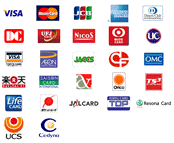In legal terms, a one-sided agreement refers to a contract where one party enjoys all the benefits while the other party is at a disadvantage. This type of agreement is also known as an unconscionable contract or an unfair contract.
The definition of a one-sided agreement can vary depending on the specific circumstances of the contract. However, some common elements of this type of agreement may include:
– Unequal bargaining power: One party holds significantly more power than the other, which allows them to dictate the terms of the agreement in their favor.
– Lack of transparency: The disadvantaged party may not fully understand the terms of the contract or may be misled about the true nature of the agreement.
– Unreasonable terms: The terms of the agreement may be excessively harsh or unfair, such as requiring one party to waive essential rights or benefits.
One-sided agreements can occur in a variety of contexts, such as employment contracts, rental agreements, or consumer contracts. For example, a landlord may include clauses in a rental agreement that unfairly favor them, such as requiring tenants to pay for all repairs or allowing the landlord to enter the property at any time.
In some cases, one-sided agreements may be considered unenforceable or illegal. Many countries have consumer protection laws that prohibit businesses from using unfair or deceptive practices when selling goods or services to consumers.
As a professional, it is important to note that one-sided agreements can have a significant impact on a company`s reputation and search engine rankings. Businesses that are known to use unfair or deceptive practices may be penalized by search engines or face negative online reviews from dissatisfied customers.
To avoid one-sided agreements, it is important to always read and understand the terms of a contract before signing. If you are unsure about any aspects of the agreement, seek legal advice or negotiate with the other party to reach a more equitable arrangement.
In conclusion, a one-sided agreement is an unfair contract where one party gains all the benefits while the other is at a disadvantage. It is important for businesses to avoid using such agreements to maintain a positive reputation and avoid legal issues. As a SEO copy editor, it is important to educate readers on this topic to ensure they are aware of their rights and can make informed decisions.













